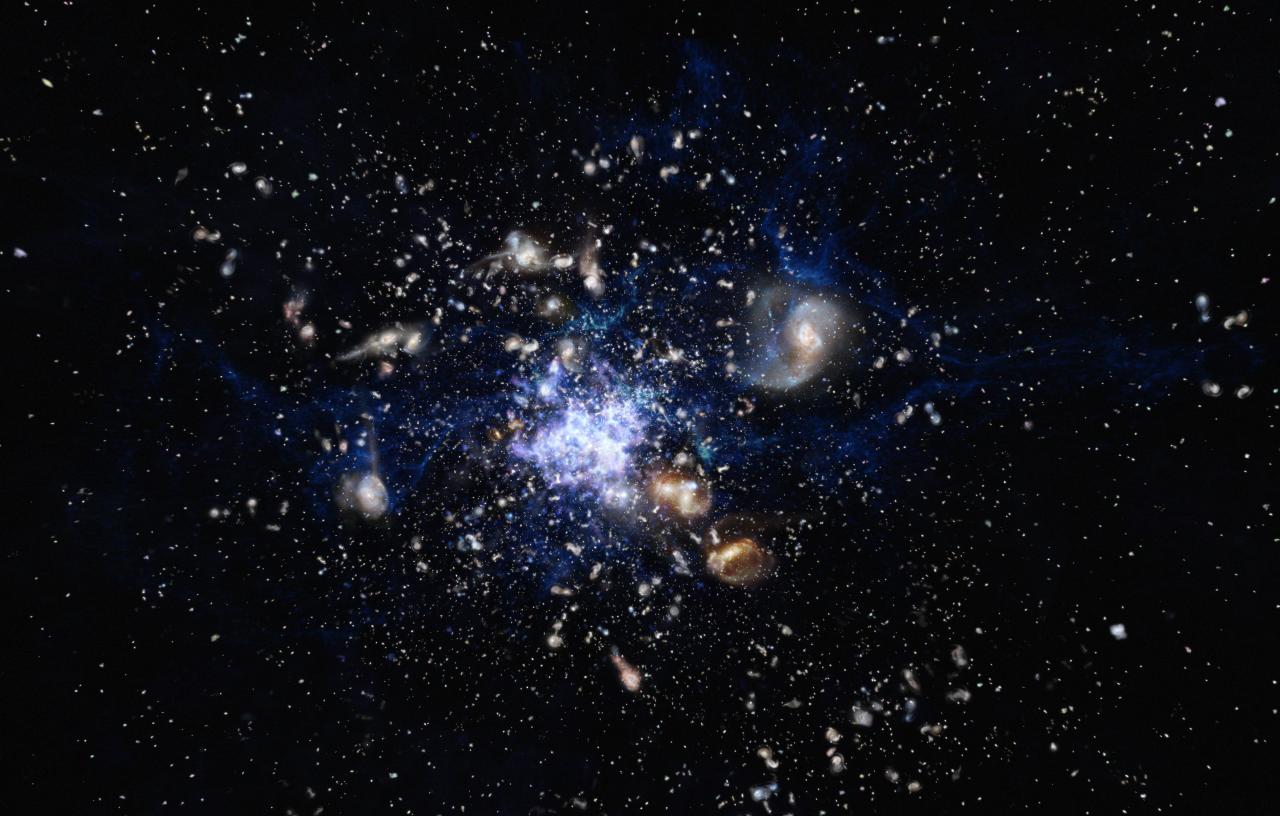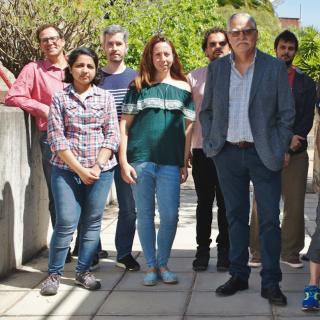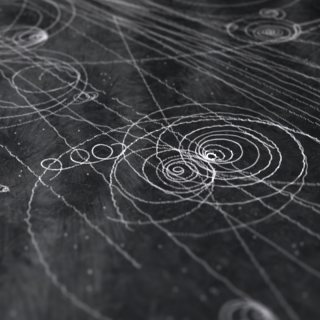Subvenciones relacionadas:
General
Dos cuestiones fundamentales en la Astrofísica son la conversión de gas molecuar en estrellas y cómo este proceso físico depende del entorno en todas las escalas, desde sistemas planetarios, cúmulos estelares, galaxias hasta cúmulos de galaxias. El objectivo principal de este proyecto es el de estudiar la formación y evolución de galaxias a partir de la materia interstellar. Por ello, estudiaremos el gas molecuar frío, el combustible de la formación estelar y el polvo, producto residual del proceso de formación, en galaxias a través del tiempo cósmico. Los estudios están basados, sobre todo, en observaciones en el infrarrojo lejano y en el radio. Nos centraremos en observaciones con interferómetros de radio como son NOEMA, ALMA, ATCA, SMA y VLA. Se preveen estrechas colaboraciones con otros proyectos del IAC, sobre todo para observaciones de galaxias con telescopios de radio. El grupo de trabajo caracterizará las propiedades de la formación estelar de galaxias masivas en el universo lejano a través del tiempo cósmico. Esto nos dará la oportunidad de estudiar la secuencia de formación de galaxias con brote estelar. Además, este grupo de trabajo investigará fuentes selecionadas desde cúmulos de galaxias y del campo para explorar la evolución de galaxias en funcion del entorno. Además, realizaremos estudios complementarios de galaxias locales (seleccionadas desde CALIFA y WEAVE-APERTIF) que servirán de referencia para investigaciones futuras de galaxias a alto redshift.
Miembros
Resultados
- Observaciones de follow-up de una galaxia amplificada con brote estelar a z=2.04 con el radio interferómetro IRAM NOEMA descubrío propiedades del gas molecular extraordinaras y revelo la emision más alta en gas molecuar jamas visto en el universo distante; Dannerbauer et al. 2019, AJ, in prensa (astro-ph/1812.03845).
- Contribuciones con varios articulos de co-autor (parte de colaboraciones internacionales) a la investigacion de cúmulos de galaxias en formacion en el universo lejano y sus miembros via estudios de multi-longitud de ondas.
- Otorgada ayuda externa via el plan naciónal de MINECO para 2018 y 2019 incluyendo fondos para contrarar un postdoc por dos años (AYA2017-84061-P: ´De las primeras sobre-densidades a los proto-cumulos ycúmulos: el papel del entorno´, 141.570 Euro, IP1: H. Dannerbauer, IP2: J. M. Rodríguez-Espinosa).
- Concedido tiempo de observaciones para continuar y finalizar el ATCA programa larga 'COALAS: CO ATCA Legacy Archive of Star-Forming Galaxies' (IP: Helmut Dannerbauer), en total 640 horas (~500.000 Euro). Concedido el IRAM NOEMA programa larga ‘A Comprehensive NOEMA Redshift Survey of the Brightest Herschel Galaxies’ (CoIP: Dannerbauer) of 191 hrs. (~770.000 Euro).
- Organización del mini-symposium 'Build-Up of Galaxy Clusters' durante la IAU XXX Assamblea General en Viena en Agosto de 2018 y del splinter "Collaborative GTC-LMT projects" durante el GTC congreso en Valencia en Diciembre de 2018.
Actividad científica
Publicaciones relacionadas
-
The 700 ks Chandra Spiderweb Field. I. Evidence for widespread nuclear activity in the protocluster
Aims: We present an analysis of the 700 ks Chandra ACIS-S observation of the field around the radio galaxy J1140-2629 (the Spiderweb Galaxy) at z = 2.156, focusing on the nuclear activity in the associated large-scale environment. Methods: We identified unresolved X-ray sources in the field down to flux limits of 1.3 × 10 −16 and 3.9 × 10 −16 erg s
Tozzi, P. et al.Fecha de publicación:
62022 -
Tomography of the environment of the COSMOS/AzTEC-3 submillimeter galaxy at z ∼ 5.3 revealed by Lyα and MUSE observations
Context. Submillimeter galaxies (SMGs) have been proposed as the progenitors of massive ellipticals in the local Universe. Mapping the neutral gas distribution and investigating the gas accretion toward the SMGs at high redshift can provide information on the way SMG environments can evolve into clusters at z = 0. Aims: In this work, we study the
Guaita, L. et al.Fecha de publicación:
42022 -
Submillimetre galaxies in two massive protoclusters at z = 2.24: witnessing the enrichment of extreme starbursts in the outskirts of HAE density peaks
Submillimetre galaxies represent a rapid growth phase of both star formation and massive galaxies. Mapping SMGs in galaxy protoclusters provides key insights into where and how these extreme starbursts take place in connections with the assembly of the large-scale structure in the early Universe. We search for SMGs at 850 $\rm{\mu m}$ using JCMT
Zhang, Yuheng et al.Fecha de publicación:
62022 -
The bright extragalactic ALMA redshift survey (BEARS) I: redshifts of bright gravitationally lensed galaxies from the Herschel ATLAS
We present spectroscopic measurements for 71 galaxies associated with 62 of the brightest high-redshift submillimetre sources from the Southern fields of the Herschel Astrophysical Terahertz Large Area Survey (H-ATLAS), while targeting 85 sources which resolved into 142. We have obtained robust redshift measurements for all sources using the 12-m
Urquhart, S. A. et al.Fecha de publicación:
42022 -
Feeding the spider with carbon. [CII] emission from the circumgalactic medium and active galactic nucleus
We present the detection of [CII] 158 μm emission from the Spiderweb galaxy at z = 2.1612 using the Atacama Pathfinder EXperiment (APEX). The line profile splits into an active galactic nucleus (AGN) and circumgalactic medium (CGM) component previously identified in CO and [CI]. We find that these individual [CII] components are consistent in terms
De Breuck, C. et al.Fecha de publicación:
22022 -
A high-resolution investigation of the multiphase ISM in a galaxy during the first two billion years
We have carried out the first spatially resolved investigation of the multiphase interstellar medium (ISM) at high redshift, using the z = 4.24 strongly lensed submillimetre galaxy H-ATLASJ142413.9+022303 (ID141). We present high-resolution (down to ~350 pc) ALMA observations in dust continuum emission and in the CO(7-6), $\rm H_2O (2_{1,1} - 2_{0
Dye, S. et al.Fecha de publicación:
32022 -
Milky Way-like Gas Excitation in an Ultrabright Submillimeter Galaxy at z = 1.6
Based on observations with the IRAM 30 m and Yebes 40 m telescopes, we report evidence of the detection of Milky Way-like, low-excitation molecular gas, up to the transition CO(J = 5-4), in a distant, dusty star-forming galaxy at z CO = 1.60454. WISE J122651.0+214958.8 (alias SDSS J1226, the Cosmic Seahorse), is strongly lensed by a foreground
Sulzenauer, N. et al.Fecha de publicación:
122021 -
Dark Energy Survey Year 3 Results: Galaxy mock catalogs for BAO analysis
The calibration and validation of scientific analysis in simulations is a fundamental tool to ensure unbiased and robust results in observational cosmology. In particular, mock galaxy catalogs are a crucial resource to achieve these goals in the measurement of baryon acoustic oscillation (BAO) in the clustering of galaxies. Here we present a set of
Ferrero, I. et al.Fecha de publicación:
122021 -
Discovery of a Protocluster Core Associated with an Enormous Lya Nebula at z = 2.3
The MAMMOTH-1 nebula at z = 2.317 is an enormous Lyα nebula (ELAN) extending to a ~440 kpc scale at the center of the extreme galaxy overdensity BOSS 1441. In this paper, we present observations of the CO(3 - 2) and 250 GHz dust-continuum emission from MAMMOTH-1 using the IRAM NOrthern Extended Millimeter Array. Our observations show that CO(3 - 2)
Li, Qiong et al.Fecha de publicación:
122021 -
Probing Galaxy Evolution in Massive Clusters Using ACT and DES: Splashback as a Cosmic Clock
We measure the projected number density profiles of galaxies and the splashback feature in clusters selected by the Sunyaev-Zel'dovich effect from the Advanced Atacama Cosmology Telescope (AdvACT) survey using galaxies observed by the Dark Energy Survey (DES). The splashback radius is consistent with CDM-only simulations and is located at ${2.4}_{
Adhikari, Susmita et al.Fecha de publicación:
122021 -
Microwave spectro-polarimetry of matter and radiation across space and time
This paper discusses the science case for a sensitive spectro-polarimetric survey of the microwave sky. Such a survey would provide a tomographic and dynamic census of the three-dimensional distribution of hot gas, velocity flows, early metals, dust, and mass distribution in the entire Hubble volume, exploit CMB temperature and polarisation
Delabrouille, Jacques et al.Fecha de publicación:
62021 -
The Evolving Interstellar Medium of Star-forming Galaxies, as Traced by Stardust
We analyze the far-infrared (FIR) properties of ~5000 star-forming galaxies at z < 4.5, drawn from the deepest, super-deblended catalogs in the GOODS-N and COSMOS fields. We develop a novel panchromatic spectral energy distribution fitting algorithm, Stardust, that models the emission from stars, active galactic nuclei (AGNs), and infrared dust
Kokorev, Vasily I. et al.Fecha de publicación:
112021 -
The effect of active galactic nuclei on the cold interstellar medium in distant star-forming galaxies
In the framework of a systematic study with the ALMA interferometer of IR-selected main-sequence and starburst galaxies at z ∼ 1 − 1.7 at typical ∼1″ resolution, we report on the effects of mid-IR- and X-ray-detected active galactic nuclei (AGN) on the reservoirs and excitation of molecular gas in a sample of 55 objects. We find widespread
Valentino, F. et al.Fecha de publicación:
102021 -
Submillimetre compactness as a critical dimension to understand the main sequence of star-forming galaxies
We study the interstellar medium (ISM) properties as a function of the molecular gas size for 77 infrared-selected galaxies at z ~ 1.3, having stellar masses 10 9.4 ≲ M ⋆ ≲ 10 12.0 M ⊙ and star formation rates 12 ≲ SFR FIR ≲ 1000 M ⊙ yr -1. Molecular gas sizes are measured on ALMA images that combine CO(2-1), CO(5-4), and underlying continuum
Puglisi, Annagrazia et al.Fecha de publicación:
122021 -
Dark Energy Survey year 3 results: covariance modelling and its impact on parameter estimation and quality of fit
We describe and test the fiducial covariance matrix model for the combined two-point function analysis of the Dark Energy Survey Year 3 (DES-Y3) data set. Using a variety of new ansatzes for covariance modelling and testing, we validate the assumptions and approximations of this model. These include the assumption of Gaussian likelihood, the
Friedrich, O. et al.Fecha de publicación:
122021 -
The mass and galaxy distribution around SZ-selected clusters
We present measurements of the radial profiles of the mass and galaxy number density around Sunyaev-Zel'dovich (SZ)-selected clusters using both weak lensing and galaxy counts. The clusters are selected from the Atacama Cosmology Telescope Data Release 5 and the galaxies from the Dark Energy Survey Year 3 data set. With signal-to-noise ratio of 62
Shin, T. et al.Fecha de publicación:
112021 -
Measurements of the Dust Properties in z ≃ 1-3 Submillimeter Galaxies with ALMA
We present Atacama Large Millimeter/submillimeter Array (ALMA) 2 mm continuum observations of a complete and unbiased sample of 99 870 μm selected submillimeter galaxies (SMGs) in the Extended Chandra Deep Field South (ALESS). Our observations of each SMG reach average sensitivities of 53 μJy beam -1. We measure the flux densities for 70 sources
da Cunha, E. et al.Fecha de publicación:
92021 -
The Einstein Ring GAL-CLUS-022058s: a Lensed Ultrabright Submillimeter Galaxy at z = 1.4796
We report an ultrabright lensed submillimeter galaxy at z spec = 1.4796, identified as a result of a full-sky cross-correlation of the AllWISE and Planck compact source catalogs aimed at searching for bright submillimeter galaxies at z ~ 1.5-2.8. Atacama Pathfinder Experiment (APEX)/LABOCA observations of the candidate galaxy reveal a source with
Díaz-Sánchez, A. et al.Fecha de publicación:
92021 -
HST grism spectroscopy of z ∼ 3 massive quiescent galaxies. Approaching the metamorphosis
Tracing the emergence of the massive quiescent galaxy (QG) population requires the build-up of reliable quenched samples by distinguishing these systems from red, dusty star-forming sources. We present Hubble Space Telescope WFC3/G141 grism spectra of ten quiescent galaxy candidates selected at 2.5 < z < 3.5 in the COSMOS field. Spectroscopic
D'Eugenio, C. et al.Fecha de publicación:
92021 -
OzDES Reverberation Mapping Programme: the first Mg II lags from 5 yr of monitoring
Reverberation mapping is a robust method to measure the masses of supermassive black holes outside of the local Universe. Measurements of the radius-luminosity (R-L) relation using the Mg II emission line are critical for determining these masses near the peak of quasar activity at z ≍ 1-2, and for calibrating secondary mass estimators based on Mg
Yu, Zhefu et al.Fecha de publicación:
112021



